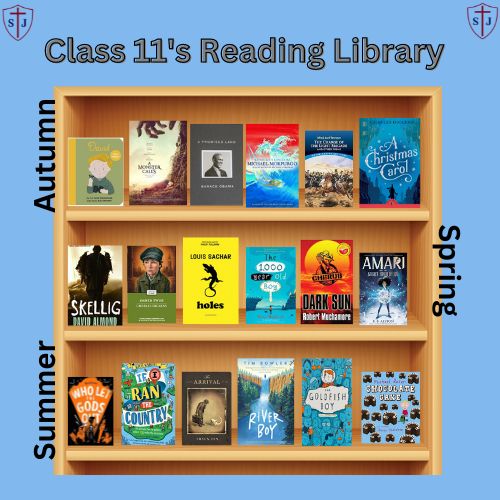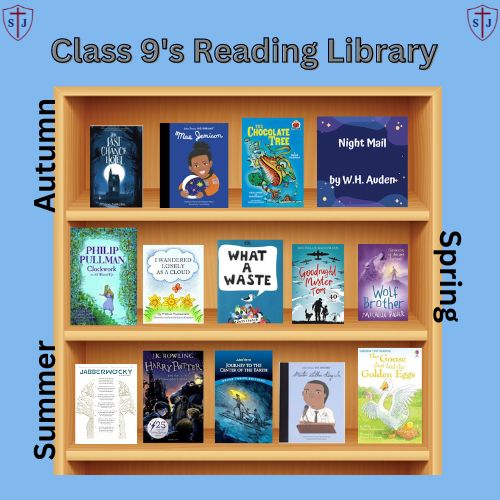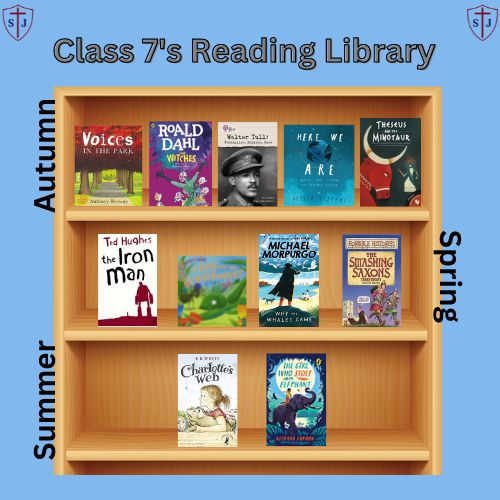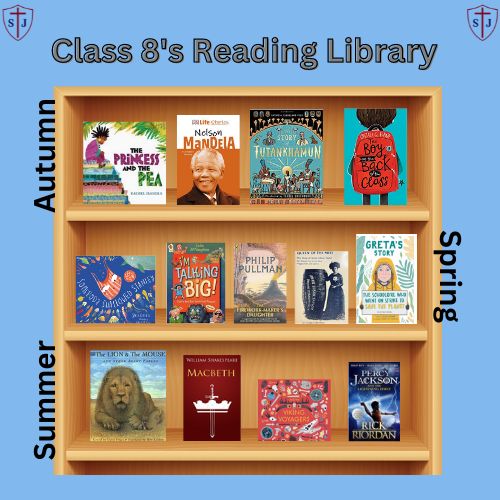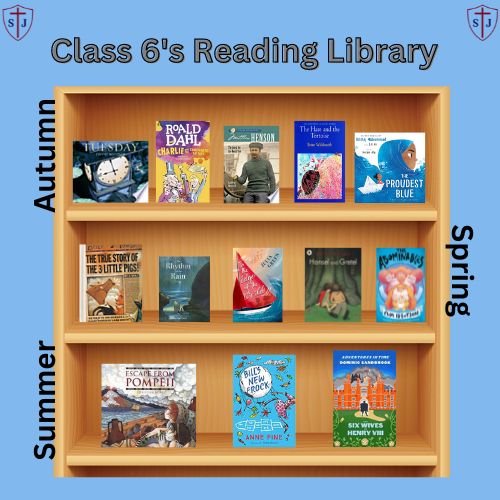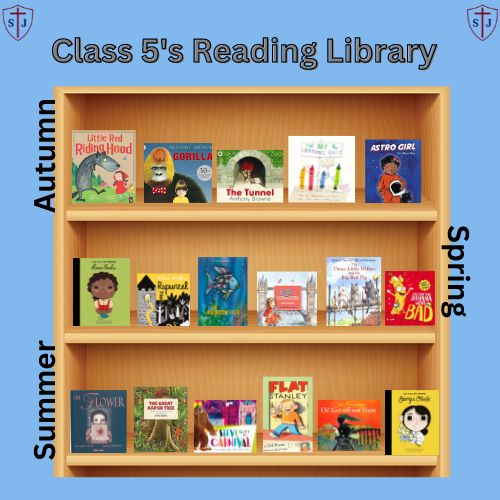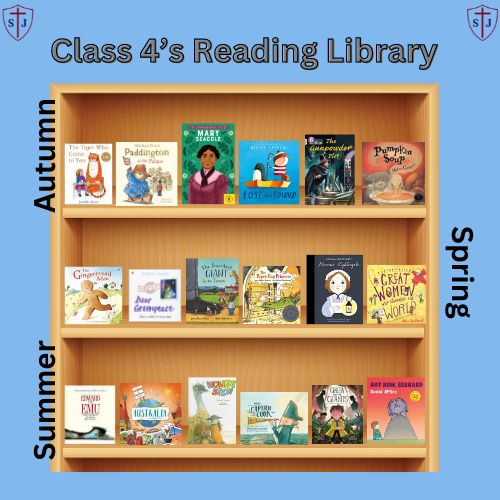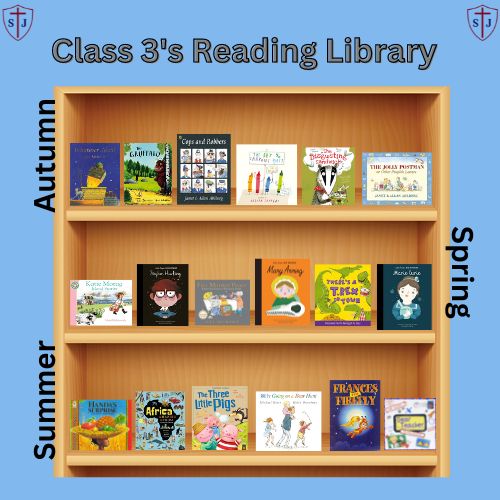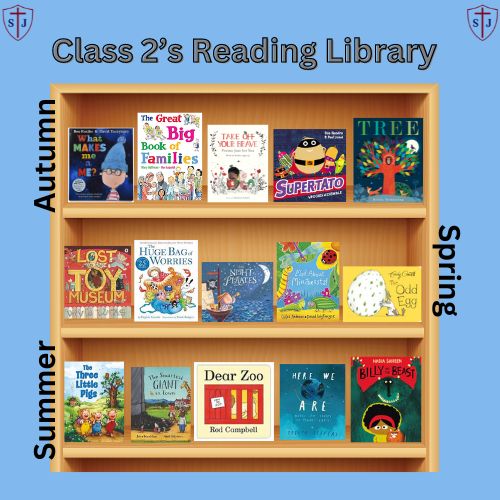
Writing
At St. Joseph’s, we are committed to ensuring the curriculum is purposeful, progressive and empowering for every child. We value all of our children and celebrate diversity of experience, need, interest, and achievement. Our curriculum provokes curiosity and excitement for all children at St. Joseph’s. We recognise that we are building the foundations for life-long learning with Christ at the centre. A shared love of literature throughout school and our faith life and Gospel values, Trust Character Virtues and British Values, sits alongside our curriculum drivers. Our curriculum drivers are what makes our curriculum unique to us here at St. Joseph’s. They are woven through all that we do and underpin our shared belief that our role is to support and help our children to understand their place within their local town, their country and in their world as a global citizen; to have experiences that become part of their life story; and aspire to achieve their very best, having been shown that there is a world of possibility awaiting them, outside of the school gates.
Intent
At St. Joseph’s we intend for children to:
- develop a love for writing as a lifelong means for communication and expressing oneself
- write clearly, accurately and coherently, adapting language and style for a range of contexts, purposes and audiences
- appreciate a rich and varied literary heritage
Implementation
At St. Joseph’s Catholic Academy, we follow the English National Curriculum when teaching writing. To ensure progress across the school we have our Writing Progression of Skills document which documents progression in; writing composition, oracy and vocabulary, grammar and punctuation, handwriting and presentation.
The flow chart below outlines the teaching sequence when teaching a different genre of writing. This sequence may take up to two weeks to implement, depending on the age of the children and the genre being studied.

This teaching sequence begins with a hook, this is to engage children’s imagination and interest using a variety of stimuli, including immersive real-life experiences (such as school trips, visitors and drama groups in school).
A high-quality text is then introduced, ranging from picture books to Shakespeare, and books linked to other curriculum areas. Look at the bookshelves below to see the different text studied in each class.
A ‘Published Piece’ is given to the children, this supports children so they know what they are aiming for in their own piece of extended writing linked to this genre. There are many different directions in which any piece of writing could go, therefore having a Published Piece provides the end-point. If the pupils can see what a good example looks like, it will help them to know whether they have successfully incorporated the features required within their own writing. At this point children will consider the success criteria for the genre, see example below. There is a progressive success criterion for all the genres of writing taught in school.
The teaching focus then moves to studying the structure and features of the chosen genre. In all year groups, children study a variety of genres, these are;
- Recounts
- Newspaper Reports
- A range of story types
- Balanced Argument
- Biography
- Instructions
- Letters
- Non-chronological report
- Persuasive writing
- Poetry
National Curriculum grammar and punctuation objectives are taught using Alan Peat’s sentence types to support understanding and progression across the school. These are applied through a variety of written activities, including guided writes.
Comprehension activities are completed based on the chosen text and a short writing task is given to embed the skills which have been introduced so far in the writing journey. Children then plan for an extended write; they draft, write and edit.
A writing ‘working wall’ is visible and used in all classes, it consists of the titles; Genre, Features, Punctuation, Vocabulary, Sentences and Steps to Success, see our examples. This wall is interactive and continually added to throughout the English teaching cycle, it is used as a learning tool by the children.
We encourage children to always take pride in their writing and to respect their books. Read our Handwriting and Presentation Progression in Skills guidance, this is supported by www.letterjoin.co.uk
The National Curriculum spelling statutory requirements are taught using daily Sounds-Write activities to ensure consistency across the school.
Phonics
Subject Lead: Miss Thomas

At St Joseph’s, we are committed to ensuring the curriculum is broad, balanced and purposeful. We recognise that we are building the foundations for life-long learning with Christ at the centre. A shared love of literature throughout school and our faith life and Gospel values, Trust Character Virtues and British Values, sits alongside our curriculum drivers. Our curriculum drivers are what makes our curriculum unique to us here at St. Joseph’s. They are woven through all that we do and underpin our shared belief that our role is to support and help our children to understand their place within their local town, their country and in their world as a global citizen; to have experiences that become part of their life story; and aspire to achieve their very best, having been shown that there is a world of possibility awaiting them, outside of the school gates.
Intent
We believe that phonics provides the foundations of learning to make the development into fluent reading, spelling and writing easier. The teaching of phonics is of the highest priority.
Implementation
At St Joseph’s we use the Sounds-Write phonics programme to teach our children to read, spell and write. All teaching and support staff have participated in 4 days of Sounds-Write training in order to deliver the programme effectively.
Beginning in Autumn term in Reception, children are taught phonics daily for 30 minutes, this continues until the end of KS1.
The Sounds-Write programme begins with what all children know from a very early age – the sounds of their own language. It then moves to carefully sequenced, incremental steps to teach the sounds in the English language and how they can be spelt. See our Phonic Long Term Plan.
In EYFS children will be introduced to the Initial Code. During KS1 children will continue following the systematic phonics teaching and learn the Extended Code looking at ‘same sounds different spelling’ and ‘same spelling different sounds.’
In Year 3, the recommendation from Sounds-Write is to repeat everything covered up to Year 2, but faster and introducing longer polysyllabic words. In Year 4, 5 & 6, the programme goes through every sound that appears in Sounds-Write, which we have cross referenced against the KS2 statutory spelling lists.
Sounds-Write teaches children that:
- Letters are symbols (spellings) that represent sounds
- Each sound may be represented (spelled) by a 1, 2, 3 or 4-letter spelling
- The same sound can be spelled in more than one way (goat, slow, note, toe, over)
- Many spellings represent more than one sound (ea in read and bread)
The following skills are taught throughout the Sounds-Write program:
- Blending – the ability to push sounds together to build words (c-a-t = cat)
- Segmenting – the ability to pull apart the individual sounds in words (pig = p-i-g)
- Phoneme manipulation – the ability to insert sounds into words and delete sounds out of words. This skill is necessary to test out alternatives for spellings that represent more than one sound.
Children are continually formatively assessed throughout phonic sessions, 'keep up' sessions are delivered by both teachers and teaching assistants to support children who are not on track.
Additionally, we teach ‘tricky words’ these are words that appear frequently in books for children and are usually learned using a whole word approach, with an action. See our Long Term Tricky Word Plan.
At the end of Year 1 children take the statutory Phonic Screening Check, this shows how well children can use the phonics skills they've learned. Any children who do not pass this test have small group interventions to continue and review their phonics journey in year 2.
If you would like to learn more about our approach to phonics and how to support your child at home, please register for the online course, free for everyone! Click here to register online!
Sounds-Write also provide an interactive app for iPad’s which offers a variety of activities to develop the skills of blending, segmenting, sound spelling correspondence, word reading and writing and sentence word.
Impact
Children will become confident readers, spellers and writers.

Reading
Subject Lead: Mrs Storr
At St. Joseph’s, we are committed to ensuring the curriculum is purposeful, progressive and empowering for every child. We value all of our children and celebrate diversity of experience, need, interest, and achievement. Our curriculum provokes curiosity and excitement for all children at St. Joseph’s. We recognise that we are building the foundations for life-long learning with Christ at the centre. A shared love of literature throughout school and our faith life and Gospel values, Trust Character Virtues and British Values, sits alongside our curriculum drivers. Our curriculum drivers are what makes our curriculum unique to us here at St. Joseph’s. They are woven through all that we do and underpin our shared belief that our role is to support and help our children to understand their place within their local town, their country and in their world as a global citizen; to have experiences that become part of their life story; and aspire to achieve their very best, having been shown that there is a world of possibility awaiting them, outside of the school gates.
Intent
At St. Joseph’s we intend for children to:
- read fluently with a good understanding
- read often for both pleasure and information
- acquire a wide knowledge and vocabulary from a range of genres and text types
At St Joseph’s we teach the National Curriculum for Reading, see our reading programme of study for each year group (Early Learning Goal, Year 1, Year 2, Year 3, Year 4, Year 5, and Year 6), and our Progression of skills in reading which this ensures knowledge and skills are built upon each year. Teachers use a variety of texts and written material for group reading lessons, these often link to writing genres being studied or other curriculum areas being taught.
To support the development of early reading skills, EY and KS1 children will participate in three guided reading sessions each week. During these sessions, children will have the opportunity to develop skills such as decoding, prosody and comprehension which in turn, will support children's fluency and confidence when reading.
In KS2 children participate in two adult led group reading sessions. To ensure a holistic approach to reading comprehension and vocabulary, beginning in Year 2 we use VIPERS (vocabulary, inference, prediction, explain, retrieve and sequence/summarise) reading domains.
Any children not making the expected progress in reading have 1:1 or small group intervention.
Beginning in Year 2 children access our online reading platform Accelerated Reading three times a week for thirty minutes. The platform recommends books for each child using their reading levels and individual interests - there are over 200,000 book choices! Once the children have a read a book, they complete a quiz about the story which monitors their comprehension and extends their learning. Accelerated Reader can also be accessed from home!
What does reading look like at home?
At St. Joseph’s we have a home-school reading system where children take a book home to read which is at the appropriate level for them. For early readers children will take home two books;
A reading practice book. This will be at the correct phonic stage for your child. They should be able to read this fluently and independently.
A sharing book. Your child will not be able to read this on their own. This book is for you both to read and enjoy together.
Moving throughout school individual home reading books follow progressive ‘book bandings’. Children will move through these different banding/stages as their reading progresses.
We request that children in Reception read for 10 minutes each day at home, children in Year 1 & 2 for at least 10 -15 minutes, Year 3 & 4 for 15 - 20 minutes and Year 5 & 6 for 20 - 30 minutes. Reading Records are used to record home reading. Click here to find out how you can support your child's reading at home.
Impact
- Pupils will enjoy reading across a range of genres
- Pupils of all abilities will be able to succeed in all reading lessons
- Pupils will be ready to read in any subject
Promoting a love of Reading
Each class has a dedicated reading area which offers a selection of books for children to read including; fiction, non-fiction, books linked to curriculum areas, protected characteristics etc. This wide selection allows children to apply their reading skills across the curriculum.
Children are read to everyday at 3pm, teachers read a variety of written material including; fiction, non-fiction, reports, diaries and poems, also using puppets, finger stories and story sacks. Weekly, we have our ‘Which teacher reads the best story?’ session where teachers go to a different class to share their favourite stories.
We have had many authors visiting our school to talk to the children. Click on the links below to find out more.
We subscribe to Reading Rocks so we keep up to date with new texts each term.
We encourage pupils in each class to share their love of reading with the Sharing Tree, children make a bookmark representing a great read they have completed, place it on the sharing tree to recommend to their peers.
Children can also recommend their favourite books in their classes ‘What should I read next?’ books. Children record with text and images their favourite book (this can be a book from home or school) and tell others why others should read it.
We have 2 book huts on the playgrounds so children can access books during break and lunchtime.
Enrichment
Reading
We have had many authors visiting our school to talk to the children. Click on the links below to find out more.
Reading enrichment
Scroll down to find lots of exciting activities to complete this World Book Day.
Activity 1 The Invisible String
This year is a little different because we can’t all be in school together, with this in mind, we decided to share one very special book: The Invisible String, by Patrice Karst. The story is about an invisible string made of love. Even though you can’t see the string; you can feel it in your heart. The string connects us to the ones we love and miss, when we are apart. Click the image below to hear the story.
Activity 2 The World Book Day Song
The World Book Day Song below follows MC Grammar as he embarks on a journey to find a new book, courtesy of his World Book Day £1 book voucher. On his way he stumbles across a fantastic array of classic and new children’s books – can you spot them all?! How many different story titles can you hear?
Activity 3 The Masked Reader
The staff at St. Joseph’s are excited to share with you our World Book Day Masked Reader Event! The teachers have chosen a book to read, their faces are hidden with a mask and their voices disguised. Click on the links below to hear the story and then it’s down to you to guess who you think is behind the mask. There is a worksheet below with some clues to help you with your guesses. We hope that you have fun guessing and enjoy listening to the stories.
Activity 4 Click below to read any of the books pictured…..then try Activity 5!
Activity 5 Book Scavenger Hunt
You will need lots of books to do this activity.
